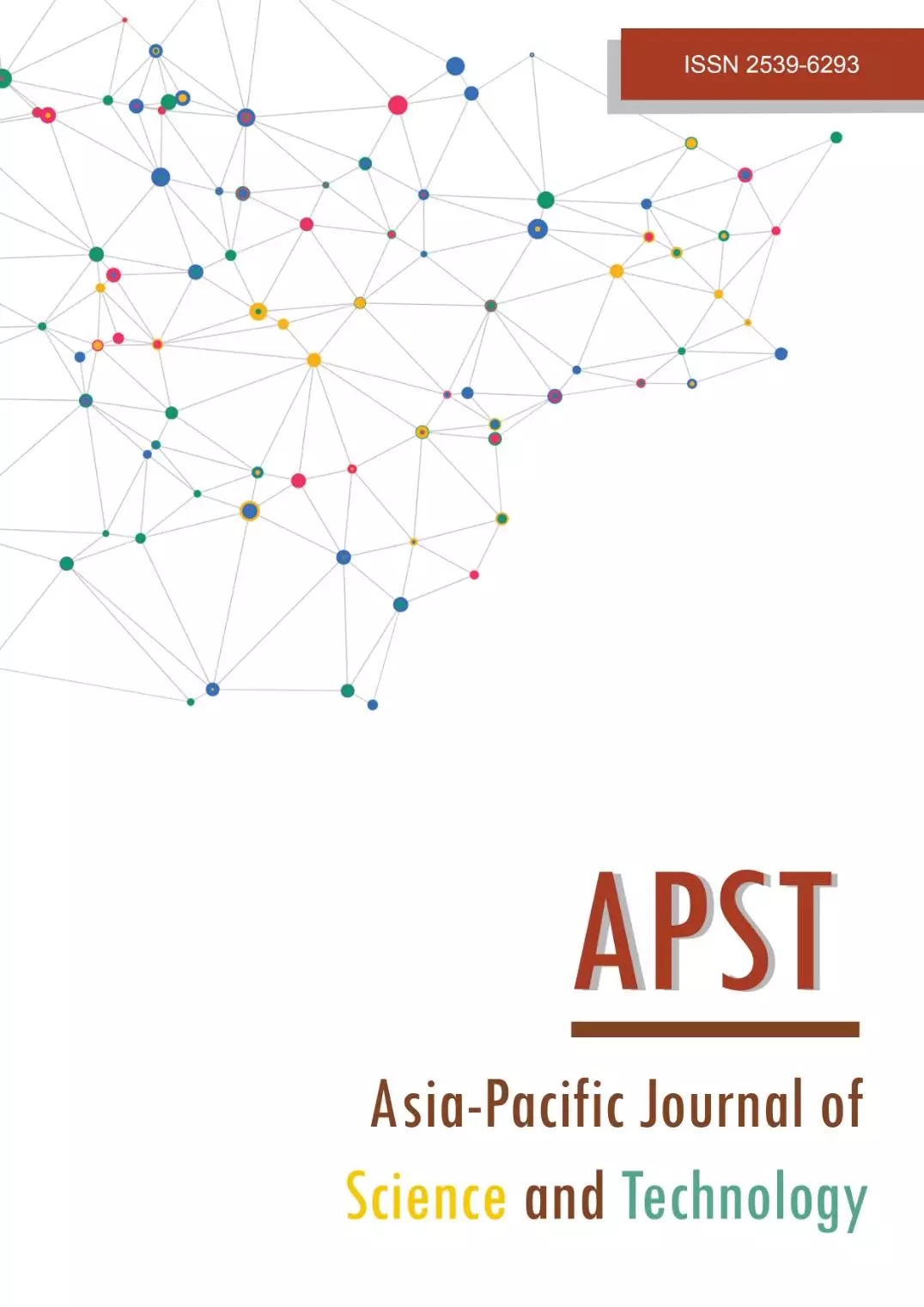Examining the impacts of individual lot stormwater detention in a housing estate
Main Article Content
Abstract
This paper describes the Storm Water Management Model (SWMM) simulations of three individual lot stormwater detention systems under the car porches of houses. These three systems consist of ready-made modular units presumably fitted under 49 m2 car porches of 204 double-story terrace houses. The 37,032 m2 housing estate is calculated to have 75% of land covered with houses, 25% with roads and other infrastructures. The housing estate was subjected to 5-minute, 10-year Average Recurrent Interval (ARI) short-duration design rainfall. The model predicted that all three systems could reduce the peak runoff at outfall from 2.79 to 0.38 m3/s. It indicated that any of the system could cause 86% reduction of the runoff for the whole housing estate. In order to differentiate the performance of the three systems, the housing lot was further investigated. When Type 1 system (1.15 m high with 49 m3 per lot) was analysed by the SWMM model, only 8% of its storage volume was filled that highlights an over design. Type 2 system (0.3 m high with 6 m3 per lot) modelled at 84% while Type 3 system (0.3 m high with 9 m3 per lot), at 54%. The difference in heights between the systems explained the low percentage of filling for the Type 1 system. Comparing Type 2 and Type 3, concrete structure within Type 3 had only half of its volume filled. In this light, the Type 2 system made of polyethylene pieces was found the most efficient in lowering post-development peak runoff.
Article Details

This work is licensed under a Creative Commons Attribution-NonCommercial-NoDerivatives 4.0 International License.
References
Garg V, Nikam BR, Thakur PK, Aggarwal SP, Gupta PK, Srivastav SK. Human-induced land cover change and its impact on hydrology. Hydrol Res.2019;1:48-56.
Li F, Zhang G, Li H, Lu W. Land use change impacts on hydrology in the Nenjiang river basin, Northeast China. Forest. 2019;10(6):476.
Sridhar V, Kang H, Ali SA. Human-induced alterations to land use and climate and their responses for hydrology and water management in the Mekong River Basin. Water. 2019;11(6):1307.
Rogger M, Agnoletti M, Alaoui A, Bathurst JC, Bodner G, Borga M, et al. Land use change impacts on floods at the catchment scale: challenges and opportunities for future research. Water Resour Res. 2017;53(7):5209-5219.
Guo X, Guo Q, Zhou Z, Du P, Zhao D. Degrees of hydrologic restoration by low impact development practices under different runoff volume capture goals. J Hydrol. 2019;578:124069.
Miller AJ, Welty C, Duncan JM, Baeck ML, Smith JA Assessing urban rainfall-runoff response to stormwater extent. Hydrol Process. 2021;35(7): e14287
Ngu JO, Mah DY, Bong CH. Flow characteristics of individual lot stormwater detention. Water Pract Tech. 2016;11(4):721-727.
Sterren M, Rahman A, Dennis GR. Implications to stormwater management as a result of lot scale rainwater tank systems: a case study in Western Sydney, Australia. Water Sci Technol. 2012; 65(8):1475-1482.
Duan HF, Li F, Yan H. Multi-objective optimal design of detention tanks in the urban stormwater drainage system: LID implementation and analysis. Water Resour Manag. 2016;30:4635-4648.
Ronalds R, Zhang H. Assessing the impact of urban development and on-site stormwater detention on regional hydrology using Monte Carlo simulated rainfall. Water Resour Manag. 2019;33:2517-2536.
Australian Tanks. Modular on site stormwater detention systems [Internet]. 2020 [cited 2020 Jul 17]. Available from: http://australiantanks.com.au/on-site-detention-systems/.
Construction Solutions. Aquacomb [Internet]. 2020 [cited 2020 Jul 17]. Available from: http://aquacomb.co.nz.
Mannan MA, Bateni N, Teo DC, Mah DY, Putuhena FJ, Ng CK, et al. System and method of green pavement. Kuala Lumpur: Malaysian Intellectual Property Corporation; 2016. Patent Application Number PI2016704420.
Liow CV, Mah DY, Zainol MRR. Modelling of StormPav green pavement system with storm water management model and infoworks collective system. IJRTE. 2019;8(2):1449-1452.
Liow CV, Mah DY, Malek MA. Modelling of StormPav green pavement system with storm water management model and solidworks flow simulation. IJRTE. 2019;8(2):4673-4679.
Mah DY, Ngu JO, Taib SN, Mannan MA. Modelling of compartmentalized household stormwater detention system using SWMM5. IJETER. 2020;8(2):344-349.
Public Utilities Board [Internet]. Singapore: The Agency; c2010 [cited 2020 Jul 17]. Technical guide for on-site storm water detention tank systems. Available from: https://www.pub.gov.sg/compliance/industry
/guides.
Department of Irrigation and Drainage [Internet]. Kuala Lumpur: The Ministry; c2012 [cited 2020 Jul 17]. Urban stormwater management manual for Malaysia. Available from: https://www.water/gov.my/In dex.php/pages/view/583.
Mah DY, Ngu JO, Caroline PD, Malek MA. Catchment size to effective tank volume relationships for individual lot stormwater detention system in Malaysian detached house. Int J Adv Trends Comput Sci Eng. 2020;9(5):8358-8363.
Ngu JO, Mah DY, Taib SN, Mannan MA. Evaluating the efficiency of household stormwater detention system. ASEAN Eng J. 2021;11(1):105-114.


